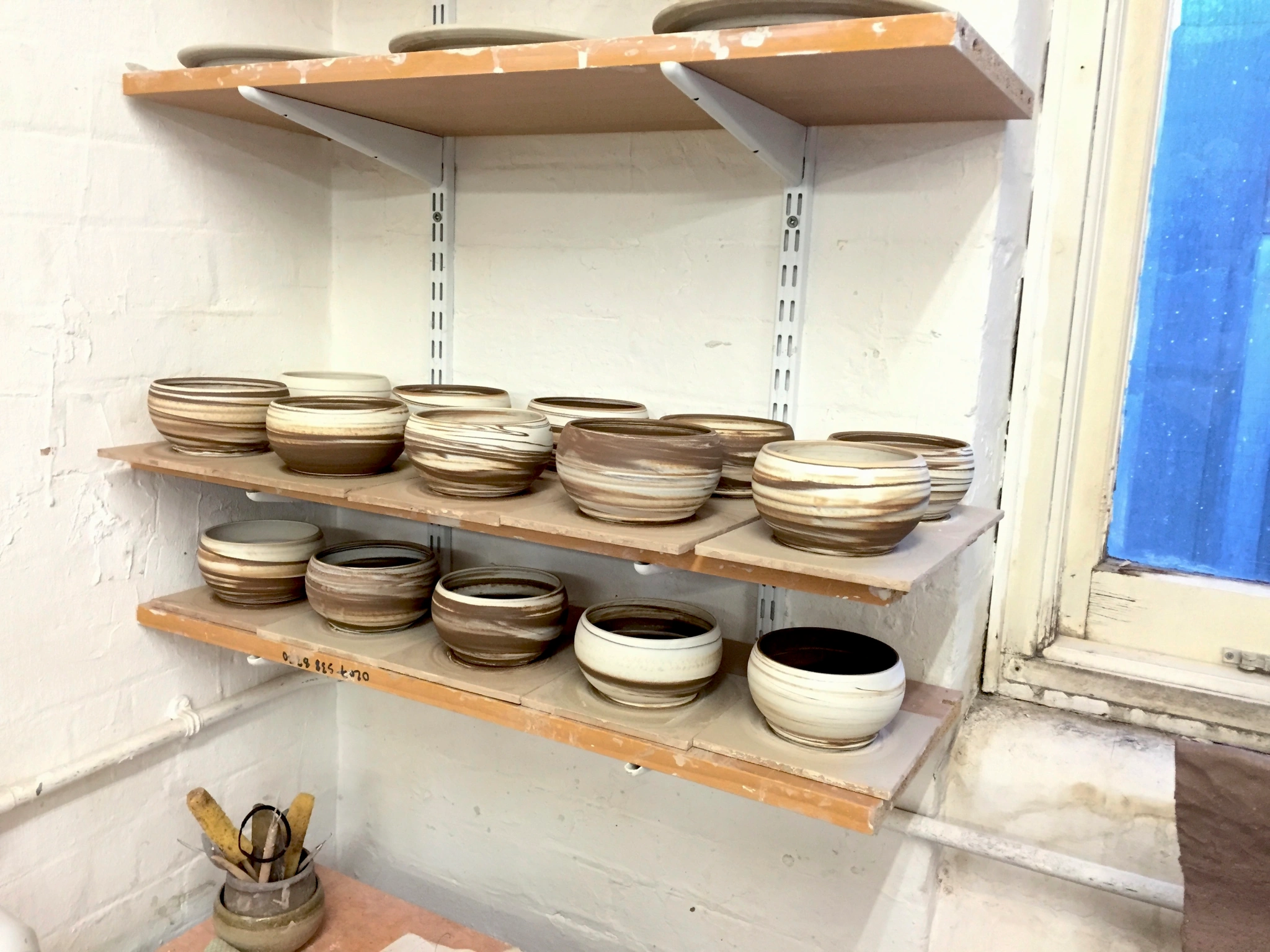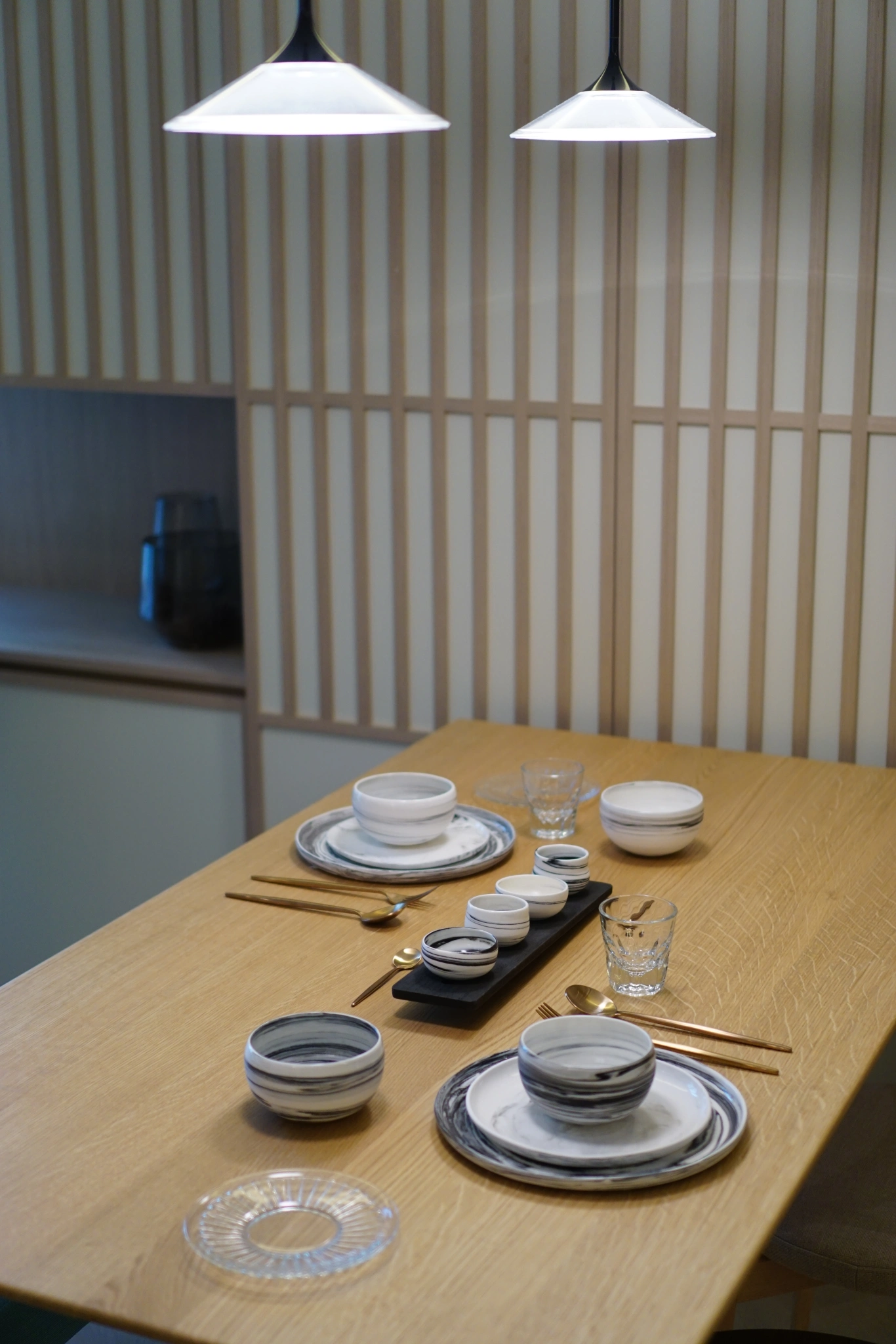The Perfection of Imbalance (ft. Amanda Tong)
May 2, 2019
Teh Talks is a series of interview conversations with creatives.
Interspersed with the interview questions and answers are my personal reflections.

This conversation between Jasmine Gui (@jaziimun) and Amanda Tong (@amandatongceramics) has been edited with love.
Pick a book.
Ceramic Faults And Their Remedies.
It’s my dictionary to go to, for whenever I have trouble with my work.

Amanda tells me a story somewhere in the middle of our interview, about the research process for her installation, “Chime of Cure”. How in history, Chinese doctors had these small brass donuts they’d wear on their belt and ring when they announced their arrival into a city. Intrigued by this, she recreated these donuts in porcelain, with little marbled balls in them. Strung up on a bamboo frame, participants could use their index finger to spin the donuts and hear the ring of beads inside. Porcelain hitting porcelain.
My interest in Amanda’s work was sparked when I chanced across an Instagram video of her throwing one of those donuts on a wheel. In conversation, there are layers and layers of stories Amanda unpacks with enthusiasm and thoughtfulness. If I had been mesmerized by her hands before, I was much more intrigued now by the synthesis of her perspectives with the forms she was putting out into the world, and the earnestness of her relationship with craft.

How do you evaluate your work?
What is good?
Concept is important.
It needs to have concept and meaning.
People might not necessarily understand but as long as I have the story, it will drive form, shape, choice of colour, glazing surface.
If you have a concept or rich research, that research can determine the shape and it makes more sense.
With Yin Yang, I want to represent the movement throwing the wheel.
There’s meaning at every level. You can explain everything.

#1: Origins
Marbling is not a trend for me. It’s conceptual.
White porcelain shrinks 15% and black stoneware shrinks about 7%.
When I first started this technique for my final year project in university, so much of my work cracked. So many of my tutors told me this was impossible, and I tested many combinations of percentages and ranges of temperature that might work. Eventually, I got some work that survived.
My goal was to introduce yin yang body conditions to a Western audience. I always felt lucky to born into this culture and know from young the broths and teas that will help get me back into shape.
The colour of black and white drew me, and these were two very different materials like yin yang, and my job was to get them to harmonize or balance. I kept going with this method even after I graduated and other experienced folks in the studio asked me why I shouldn’t just use the same materials and stain it so the shrinkage would be consistent, but I didn’t want to give up on it and I kept finding ways to improve.
Then I moved back to Hong Kong.
Back in the UK, I had about a 3/10 cracking rate.
When I came back to HK, I brought clay back from the UK and using the same clay, same method, same glaze, same firing, the crack rate shot up to 7/10. The environment and the kiln changed everything and I had to start all over again. The reality is, you have to spend quite a while to test. The most difficult was the material in HK is lacking.
In the UK, you can find over 10 different kinds of porcelain whereas here, you can count on one hand how many varieties of porcelain you can source. You could find other kinds here, but you have to know who to find, in order to source them.

When Amanda tells me that her first marbled pieces use two different materials with different reduction rates, I feel a strange resonance. What is this impulse we have to wrestle together two things that don’t mesh, that even react in tension to each other. Maybe at the heart of our craft and work is an ongoing attempt to make sense of the rifts in ourselves, the materials that make us who we are, but that don’t always make sense.
As Amanda takes out one of the Perfect Imbalance sets for me to look at, I think about how her research and reflections in Yin and Yang manifests through this labourious, precise and intentional marbling process. I wonder about the need for balance, the joy at imbalance, and the will to see double, if not, multiple possibilities.

Why is balance or imbalance of so much interest to you?
In the beginning, Perfect Imbalance was more about food therapy; eating the right food to balance our body conditions.
I was looking into it a competition called FoodArt and exploring the eating cultures between the East and West
The Perfect Imbalance series asks you to eat opposite sides of the piece to keep everything balanced
The set features two white pieces: yang and two black pieces: yin.
Eventually, it was not about food anymore, but about getting that balance in life.
Now I really feel it.
This work really reminds me that you really have to make the move yourself.
*moves the cup pieces across the board*
To many people, it’s hard to make a move because of all the burdens or bundles you are carrying. But you have to find the little things to balance.
I was looking into it a competition called FoodArt and exploring the eating cultures between the East and West
The Perfect Imbalance series asks you to eat opposite sides of the piece to keep everything balanced
The set features two white pieces: yang and two black pieces: yin.
Eventually, it was not about food anymore, but about getting that balance in life.
Now I really feel it.
This work really reminds me that you really have to make the move yourself.
*moves the cup pieces across the board*
To many people, it’s hard to make a move because of all the burdens or bundles you are carrying. But you have to find the little things to balance.

#2: Work to Sell or Sell to Work?
After doing an exhibition with my current studio in the summer, I got a message on IG.
After visiting the exhibition, this guy, a tea drinker, wanted customized gaiwans made for him and his girlfriend. Around the same time, a girl messaged me and asked if I could make something for the boyfriend. It turns out they were a couple.
It was very memorable and a very big encouragement for me, to create special moments for people.
I arranged to have them pick it up a few days from each other so that they could give it to each other around the same time.
In the beginning, I did not want to make commercial products; I wanted strong concepts.
But at the end of the day, you got to find that balance. You don’t want to lose your viewpoint, but you should take opportunities too.
How are you going to talk yourself into accepting new opportunities?
A lot of times, for me, it’s about the mental process as much as the physical process. You have to balance the value of creative process and having flexibility.
It depends on the circumstances, especially with clay, because it takes so long to see the final result. You can’t afford just months and months and years and years of testing without being able to make money.
How do I make a living?

The dilemma of the artist is the selfish impulse to want to be a world: to live by your rules and create on your terms, engage with ideas, respond to emotions and make with a community.
But of course, the reality is that artists have to negotiate between that selfish impulse and the impulse to survive.
The moment of discovery is constantly impacted and re-impacted by our experiences, our growing and learning, and our convictions. As Amanda talks through her processes, her move from the UK back to HK, I see these stories, each a unique marbling, appearing beneath the slip of life as she scrapes it away. Each story revealing a perspective made possible through intention, experience and repetition.

Every potter has a clay love story. What’s yours?
When I throw on the wheel, my mind is blank.
The stage where I scrape off the slip to see the marbling pattern underneath is sort of like a big reveal every time.
I want to value each piece; each of the patterns are so unique.
The reason I love this material so much is because it taught me so much about life. There’s no shortcut. It’s all trial and error.
It’s very much about learning the mental thing. Self-talking. It totally takes away the stress while also adding stress *laughs*
You have to invest your patience and time to build something you love. It’s all about how you pick yourself up. Sometimes I go through weeks and weeks of hard work and then when I open the kiln, it’s RIP. Nowadays, I get over it very quickly. There’s no time to cry
I’m constantly building this relationship with clay. The clay asks, “Hey, pay attention to me.”

#3: How am I going to love this work?
During the Sheung wan exhibition, I was still using UK clay but was moving toward different methods and testing. Reality hit when I realized that I couldn’t do the porcelain-stoneware mix in HK, when I couldn’t find the clay I was familiar with that worked.
Eventually I started moving to the staining method and producing things. It was too impractical to keep trying stoneware here in HK. The question was, “How am I going to love this work?”
I wanted a warm black but staining produced a blue-black that didn’t work. I started testing percentages of different black and brown stains to get to as close as what I wanted as possible.
Over time, I slowly worked out methods of staining the clay and opened the kiln full of this new style of clay with nothing cracking.
I thought, “I was so stupid; why didn’t I do this two years ago?”
I had to work with the local materials. It should be that way. I remember that moment of opening the kiln, It was such a great feeling.
This is where I am now.